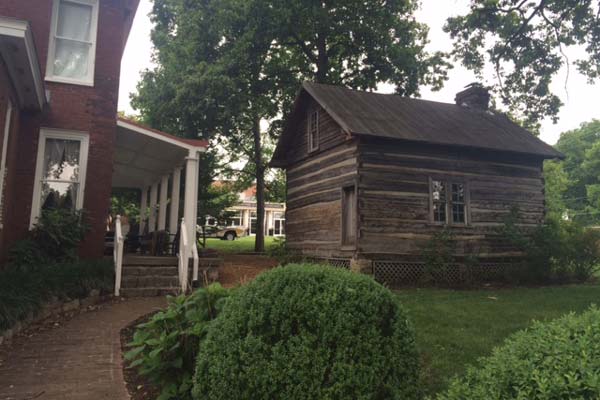Generations of Lipscomb students have heard the mysterious tale of the cave system that runs beneath campus but have been unable to dig deeply enough into the story — or into the ground for that matter — to discover the truth.
“I went to school here back in the mid ’80s and graduated in the ’90s, so I’ve always heard of the cave system,” said Kim Chaudoin, associate vice president of communication and marketing.
“I never went digging or exploring, but I reached out to people who I knew might know.”
What she discovered are various writings and records that indicate that beneath Avalon House — home of David and Margaret Lipscomb on the campus’ edge — was a spring, that is now thought to be part of the cave system.
The Lipscombs lived there in the mid 1800s, before the invention of refrigerators, and — as was common upper-class practice in those days, either by building a spring house or in their case simply descending beneath the home to the coolness of a natural spring below — they used the spring to store perishables like milk and meat.
Because of Tennessee’s porous limestone underpinnings springs and caves are relatively common.
“The cave system has not been mapped out by the U.S. Geological Association and is not shown on the maps of any Tennessee cave systems,” Chaudoin said. “But what we think we know is that there are some places under the campus and that there’s evidence of it as far away as 100 Oaks Mall.”
The theory is that one could travel beneath the ground from the old Lipscomb home all the way to that mall, if there were access points.
She also explained that the cave system might extend to Longview Mansion. The mansion, owned by the university, is located at the end of Caldwell Lane approximately a mile from campus.
According to Chaudoin, that mansion was a part of the Underground Railroad, the legendary hide-and-seek passageway to freedom for escaped slaves.
“There are all kinds of stories about students that have gone in there and dug around,” Chaudoin said. “I think that’s been something that students through the decades have tried to find entry points, but I don’t think today you would.
“It’s probably impossible to find any, except maybe if you could get to the spring [that] is under the house, if it’s not concreted over. It’s probably hard to find a place where you can really get into it.”
Director of campus construction Mike Engelman said that though it did exist, most of the cave system has collapsed in recent years.
A year after the Student Activities Center opened, a tree collapsed into a sinkhole — an indication of a cave or void beneath the limestone — that opened up and had to be filled in.
Sinkholes, a common-enough construction industry concern in Tennessee, are not a major worry here, but there are precautions taken.
“We do a geotech before we build any buildings,” Engelman said. “What they do is come in and drill 15 feet down just to see how the rock is and make sure there’s no holes under the rock.
“I know everyone wants to know about the cave system, but it’s usually just seams in the rock.”
Though access to the cave is no longer available to students, the stories and folklore remain part of Lipscomb’s history.
“Anything like that that’s part of our history and legend for that many years it’s really cool, and it’s exciting to try to find people who have actually dealt with it,” Chaudoin said.

